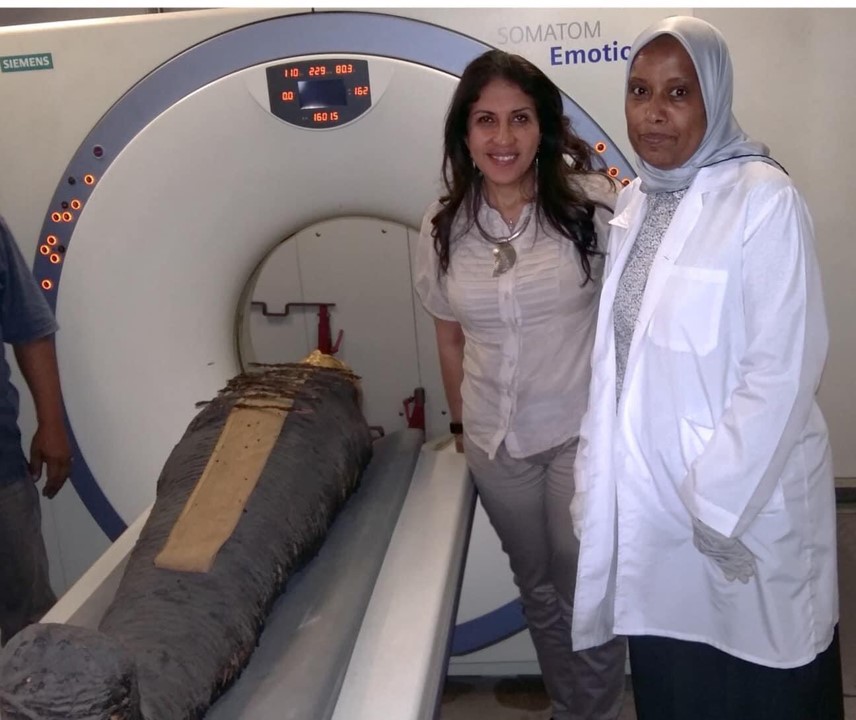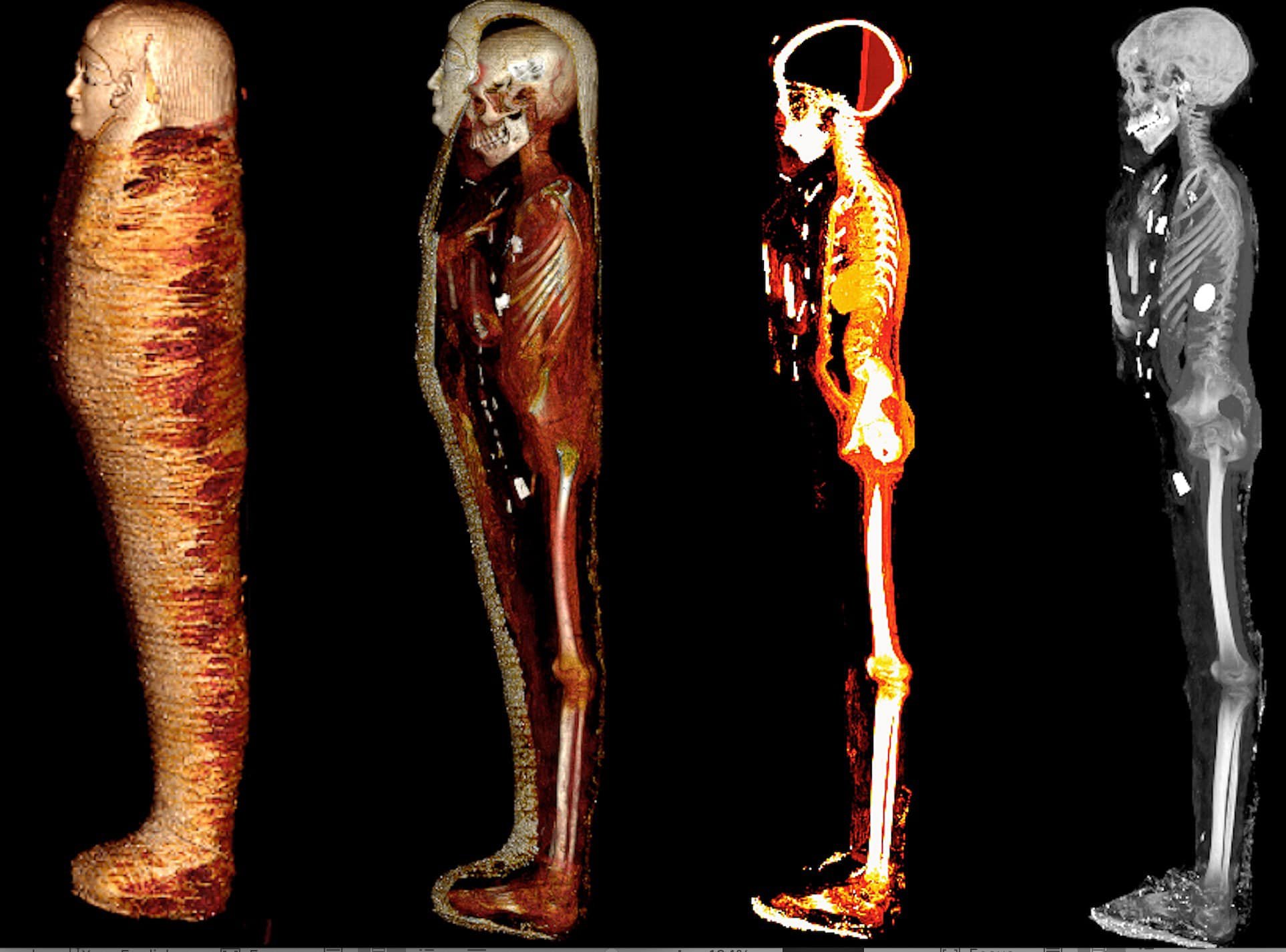
CT scans have been used to unwrap the secrets of the mummified 2,300-year-old remains of an ancient Egyptian teenager, dubbed the “Golden Boy” mummy. The Golden Boy earned his moniker on account of the forty-nine precious amulets that adorned his body.
The mummy was discovered in 1916 at a burial ground utilized between 332 BC and 30 BC in Nag el-Hassay in Southern Egypt. However, the mummified remains were not examined until recently when they were brought out of a basement in Cairo’s Egyptian museum and scanned by a team of scientists.
Who was the Golden Boy mummy?
By using CT scans, the research team could examine the mummy without removing any of its linen wrappings. Based on these findings, Sahar Saleem, a professor of radiology at the faculty of medicine at Cairo University, concluded that the boy belonged to a wealthy family.
The research team found that the body of the adolescent boy was bedecked with precious amulets, intended to protect the deceased in the realm of the dead.This was known to the ancient Egyptians as the Duat.
Saleem, who led the study, said, “Many were made of gold, while some were made of semi-precious stones, fired clay or faience. Their purpose was to protect the body and give it vitality in the afterlife.”
A variety of amulets were found alongside the mummified remains. A golden heart scarab was stuck down the Golden Boy’s throat, and a golden tongue was placed in his mouth.

Saleem said that these amulets were “beautifully stylized in a unique arrangement of three columns between the folds of the wrappings and inside the mummy’s body cavity. These include the eye of Horus, the scarab, the akhet amulet of the horizon, the placenta, the knot of Isis, and others.”
The CT scans also revealed that the mummified boy was probably about fourteen to fifteen years old when he died. This was determined based on his lack of wisdom teeth and the degree of bone fusion in his skeletal remains.
الأشعة المقطعية تكشف أسرار مومياء الصبي الذهبي ببدروم المتحف المصري بالتحرير! pic.twitter.com/Rw0c6ipwm1
— Ministry of Tourism and Antiquities (@TourismandAntiq) January 24, 2023
Speculation
The CT scan also revealed some interesting details which have left the research team and other Egyptologists with yet more questions. According to digital analysis, the boy was uncircumcised. This was in fact a rarity among ancient Egyptians.
In fact, circumcision is “well documented in representative scenes on tombs, as well as in physical remains of Egyptian people from various periods,” as noted by one study.
“The lack of circumcision is interesting as it might tell us something about his ethnicity— Egyptians tended to be circumcised generally before the age of 13,” commented Professor Salima Ikram, head of Egyptology at the American University in Cairo.
“It might suggest that foreigners adopted Egyptian burial practices—and we know the Persians did,” Ikram continued. Egyptologists are now speculating whether the Golden Boy could have been a Nubian, Greek, Persian, or foreigner from nearby Asia Minor. However, it is also possible that he was an Egyptian who did not follow the usual custom for an undetermined reason.
See all the latest news from Greece and the world at Greekreporter.com. Contact our newsroom to report an update or send your story, photos and videos. Follow GR on Google News and subscribe here to our daily email!



